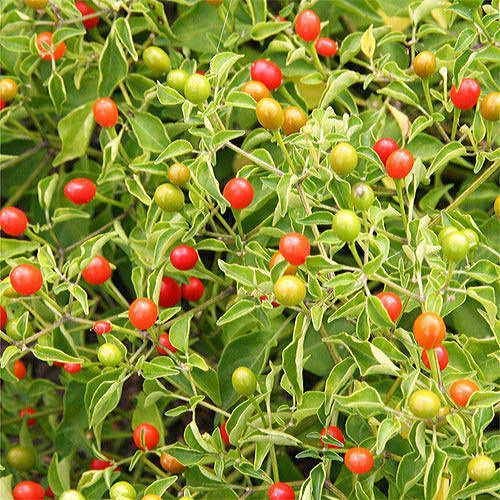All Categories


Park Seed "Bird Pepper" Tepin Pepper Seeds, Pack of 25 Seeds
Share Tweet
Get it between 2025-02-24 to 2025-03-03. Additional 3 business days for provincial shipping.
*Price and Stocks may change without prior notice
*Packaging of actual item may differ from photo shown
- Electrical items MAY be 110 volts.
- 7 Day Return Policy
- All products are genuine and original
- Cash On Delivery/Cash Upon Pickup Available








Park Seed "Bird Pepper" Tepin Pepper Seeds, Pack of Features
-
Though this pepper is entirely edible, its well-branched little bushy plant is so attractive and heavy-yielding that many folks grow it as an ornamental and let the birds have the tiny, incredibly hot peppers (they don't taste the heat, and absolutely love these little round fruits). But if you're ambitious, consider putting just a silver or a pinch, if dried, into a dish one night. You will definitely know it's there.
-
Tepin sets ¼- to ½-inch diameter peppers that gradually mature from green to red. If you want to harvest them all, go ahead and pick them green, or the birds may beat you to the lion's share. Many experts believe that this is the original Native American wild chile from which all others descend, and given the vigor of this plant, it certainly seems likely. The species is known by many common names, including bird pepper, pequin or piquin, and (our favorite) chile mosquito.
-
Tepin peppers measure between 50,000 and 100,000 on the Scoville heat index, which is essentially off-the-charts hot. (Jalapeño is only about 5,000 Scovilles, by comparison.) The heat is interesting, though—the first bite is unbelievably spicy for a few minutes, then recedes a bit—setting it apart from the super-hot peppers such as habanero.
-
Compact enough for containers, and an excellent addition to the rose or vegetable garden (it keeps many pests away from tender plants), Tepin is just too fascinating not to try.
-
Days to Maturity: 180 to 200 from transplant
About Park Seed "Bird Pepper" Tepin Pepper Seeds, Pack Of
180 to 200 days from setting out transplants. Though this pepper is entirely edible, its well-branched little bushy plant is so attractive and heavy-yielding that many folks grow it as an ornamental and let the birds have the tiny, incredibly hot peppers (they don't taste the heat, and abolutely love these little round fruits!). But if you're ambitious, consider putting just a silver or a pinch, if dried, into a dish one night. You will definitely know it's there!

























